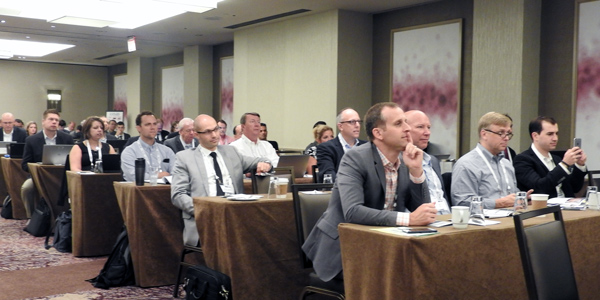By William Opalka
NEW YORK — Speakers at Infocast’s 2nd NY Energy REVolution Summit last week pondered how New York’s Reforming the Energy Vision could deliver on its promise of cleaner and more distributed generation, with persistent low power prices.
The challenge is introducing transformative changes in an environment of already record-low prices, changes that would reduce margins for market participants while also requiring massive investments.
“The state of New York has embarked on two significant transformative issues simultaneously: the Clean Energy Standard driving toward 50% renewables [by 2030] and REV,” Michael Schwartz, CEO of advisory firm New Wave Energy Capital Partners, said during a panel discussion on the latest developments of REV. “If I have seen in the past the potential for stranded investment, this is it. If we’re going to achieve the CES, the state is going to [need to] create incentives for market signals to drive the construction of utility-scale renewables at the same time we’re driving down demand and moving [generation] behind the meter.”
Schwartz said regulators will somehow need to reconcile the initiatives.
“The fundamental change to move from cost-of-service to market-based [utility earnings] is conflicted with maintaining the financial integrity of electric utilities,” he said.
Utilities, while understanding the imperative to revamp their generation fleets, maintain infrastructure and preserve their financial viability, are wary, he added.
“Based on discussions I’ve had, the consensus in other jurisdictions is ‘we’re not doing that,’” Schwartz said.
New York is moving ahead on another legally uncertain path to create financial incentives for its struggling nuclear fleet until large-scale renewables are built to take their place. On Monday, the New York Public Service Commission approved a zero-emission credit for nuclear plants, at a projected cost of $7.6 billion over 12 years. (See related story, New York Adopts Clean Energy Standard, Nuclear Subsidy.)
A proposal earlier this year based the ZEC subsidy on the difference between the cost-of-service from the nuclear plants and the wholesale power prices in NYISO. A PSC staff proposal in July changed the formula to align with EPA’s calculation of the social cost of carbon. Generation owners, customers and some environmentalists object.
David Appelbaum, an attorney for the New York Power Authority, said the change was the result of the U.S. Supreme Court’s April decision in Hughes v. Talen, in which the court voided Maryland’s attempt to incent generation by using a contract for differences related to the PJM capacity market. (See Supreme Court Rejects MD Subsidy for CPV Plant.)
“The order has changed significantly. Before the change, it would have been open to challenge in the context of the [Hughes] decision,” Appelbaum said. “It’s less so, but there’s still risk.”
Whatever the eventual outcome, New York has gotten ahead of many places as it embarks on REV.
“Once you start looking at the regulatory paradigm, regulation was not intended to support this vision. Regulation is still cost-of-service-based,” said Paul DeCotis, a senior director at West Monroe Partners and panel moderator.
However, Jim Gallagher, executive director of the New York State Smart Grid Consortium, said the model is still relevant for now.
“We need to remember that utility cost-of-service regulation is still going to provide 96% of utility revenues for the foreseeable future and these initiatives are going to provide less than 4%,” he concluded.




